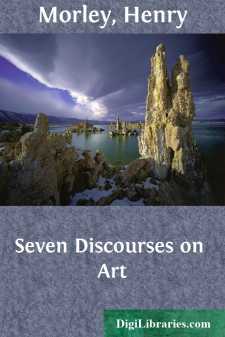Categories
- Antiques & Collectibles 13
- Architecture 36
- Art 48
- Bibles 22
- Biography & Autobiography 813
- Body, Mind & Spirit 142
- Business & Economics 28
- Children's Books 16
- Children's Fiction 13
- Computers 4
- Cooking 94
- Crafts & Hobbies 4
- Drama 346
- Education 46
- Family & Relationships 57
- Fiction 11829
- Games 19
- Gardening 17
- Health & Fitness 34
- History 1377
- House & Home 1
- Humor 147
- Juvenile Fiction 1873
- Juvenile Nonfiction 202
- Language Arts & Disciplines 88
- Law 16
- Literary Collections 686
- Literary Criticism 179
- Mathematics 13
- Medical 41
- Music 40
- Nature 179
- Non-Classifiable 1768
- Performing Arts 7
- Periodicals 1453
- Philosophy 64
- Photography 2
- Poetry 896
- Political Science 203
- Psychology 42
- Reference 154
- Religion 513
- Science 126
- Self-Help 84
- Social Science 81
- Sports & Recreation 34
- Study Aids 3
- Technology & Engineering 59
- Transportation 23
- Travel 463
- True Crime 29
Journal of the Third Voyage for the Discovery of a North-West Passage
by: Henry Morley
Categories:
Description:
Excerpt
INTRODUCTION.
William Edward Parry, the son of a physician, was born at Bath in December, 1790. At the age of thirteen he was entered as a first-class volunteer on board the flag-ship of the Channel fleet, and after seven years’ service and careful study of his profession he obtained a commission in 1810 as lieutenant in the navy. He was then at once, aged twenty, sent to the Arctic seas, where he was during two or three years in command of a ship for protection of the British whale fisheries and for revision of the admiralty charts. In 1813 he was recalled from that service and sent on blockade service to the North American station, where he remained about four years, and occupied his leisure in writing a book on “Nautical Astronomy by Night,” which he published upon his return to England in 1817.
At that time the search for a North-West Passage to Eastern Asia had been suspended for more than half a century. No expedition had been sent out since 1746. But after Lieutenant Parry’s return from the North American station, an expedition was prepared under Sir John Ross in the Isabella, which sailed in April, 1818, accompanied by the Alexander, to the command of which Parry was appointed, Sir John Ross being chief of the expedition. They went by Davis’s Straits to Lancaster Sound, where Sir John Ross gave up hope of success and turned back; though Lieutenant Parry would have gone on. Next year Parry was entrusted with an expedition of his own, which set out in May, 1819, and reached Lancaster Sound in July, discovered Prince Regent’s Inlet, and Barrow Straits, named after Sir John Barrow, Secretary to the Admiralty, who was active promoter of these expeditions. Parry wintered among the ice and returned next year, having pushed Arctic discovery by thirty degrees of longitude farther than any who had gone before. That was Parry’s first voyage, from which he returned to be received with triumph by his countrymen. He was advanced to the rank of Commander in November, 1820, and made a Fellow of the Royal Society. He had shown in what direction to proceed with further search, and at the age of thirty had established for himself a place of lasting honour in the history of English navigation.
Commander Parry was sent on a second expedition in 1821, from which he returned in 1823. He was to explore the Fox Channel, for the purpose of ascertaining whether it was connected with the Arctic Sea of his first voyage. This voyage had no important results; and in 1824 Parry started again on the third voyage, of which this volume contains his Journal. In 1827 he sailed again in the Hecla, but found himself sledging over ice that floated southward as fast as he travelled forward on it northward. He returned then to the work ashore, as a hydrographer, for which his thorough knowledge of navigation marked him out. Desire for a more active life caused him to spend four or five years in Australia (from 1829 to 1834) as Commissioner to the Agricultural Company of Australia. He was knighted, and became in 1852 a Rear-Admiral. Sir Edward Parry was Lieutenant-Governor of Greenwich Hospital at the time of his death, in July, 1855.
H. M.
INTRODUCTION.
Notwithstanding the want of success of the late Expedition to the Polar Seas, it was resolved to make another attempt to effect a passage by sea, between the Atlantic and Pacific Oceans. The chief attentions in the equipment of the present expedition consisted in the placing of Sylvester’s warming stove in the very bottom of the ship’s hold, in substituting a small quantity of salt beef for a part of the pork, and in furnishing a much larger supply of newly corned beef. Preserved carrots and parsnips, salmon, cream, pickles of onions, beetroot, cabbage, and, to make the most of our stowage, split pease instead of whole ones, were supplied. A small quantity of beef pemmican, made by pounding the meat with a certain portion of fat, as described by Captain Franklin, was also furnished....












